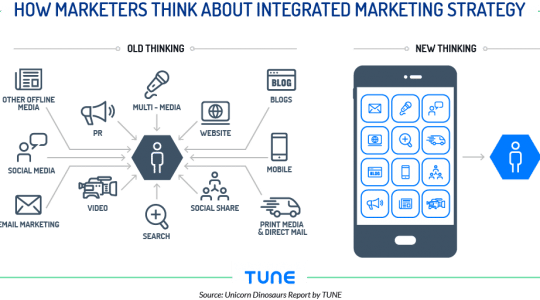This is a guest post by Chris Binstadt. Chris Binstadt is senior director of publisher and business development at Nexage, leading publisher and developer acquisition efforts on the West coast.
There is no question that the mobile advertising space is ripe with opportunity for both marketers and app and game developers. In an earlier post, Ciara Spillane laid groundwork for the extraordinary consumer demand for mobile content, applications, and games. This has, of course, driven rapid growth in mobile advertising in absolute terms (up and to the right) and in how marketers and agencies allocate budgets (mobile spend will eclipse online spend in a few years).
But the growth in mobile does not mean that buying and selling stays the same, rather just on a larger scale. Instead, the market is changing as technology plays a greater role, as app developers adapt to consumer habits, and as marketers and agencies respond to the massive consumer shift to mobile.
In this post, we’ll examine the top 3 mobile advertising trends affecting mobile app and game developers today.
1. Programmatic is All the Rage
Like many big trends, programmatic seems to fall victim to “buzzword status”. So first, let’s define what it is: programmatic is a suite of technologies that enable sellers (mobile app/game developers) and buyers (advertisers) to transact in real-time. This suite includes:
-
Real-time bidding (RTB) exchanges that use auctions to enable buyers to compete for publishers and developers’ individual impressions
-
Private exchanges where sellers select the buyers they want to work with and use RTB auctions to enable more limited competition
-
Programmatic direct where the sellers’ direct sales force makes the deal with the agency on a direct basis, but uses exchanges to enable the transaction
All three of these markets leverage the exchange and add significant value to developers, enabling:
-
Efficiency at scale – humans and manual IO processes simply can’t catch up to the volumes
-
Simplicity and consolidation of your ad tech stack and operations
-
Access to more buying power
-
Insights into performance at the impression level
These four values are propelling programmatic technologies to take an ever-larger share of mobile advertising.
2. Lifetime Value (LTV) Requires Smarter Ad Strategies
LTV is a simple notion with multiple implications. Simply put, developers want to maximize their revenue per customer. Achieving strong LTV is getting harder. Generally, game developers are only able to monetize about 3%-7% of their customers through paid games and in-app purchases. That leaves somewhere around 93%-97% of customers that should be monetized.
Yet, game developers are seeing somewhere between 30%-70% of those customers go inactive post-install. And that means that game developers have fewer customers—somewhere in the range of 40%-70% of the customers that downloaded the game—that can create revenue growth.
That is a hard equation to swallow. The implications impact the entire customer lifecycle, from customer acquisition to revenue generation.
There is a set of strategies developers can use to minimize inactive user risk and drive revenue growth/LTV growth, including:
-
Programmatic: as more and more buyers flock to programmatic buying, developers can maximize their access to spend through exchanges.
-
Brand safety: one of the items that may cause customers to churn inactive is that they get bad ads. In addition, bad ads can cause downgrades in the Google and Apple App Stores. A comprehensive brand safety/ad quality capability is needed to safely monetize customers.
-
Ad relevance: survey after survey shows that consumers find that if an ad is reasonably relevant, they will accept and sometime get value from the ad. Developers that are able to provide data in addition to device ID (e.g., demographic, location) improve their chances to enable relevant ads for their customers.
-
Ad formats, placement, and treatment: decisions about what type of formats, how they flow with the logic of the game, where they are, and how long they show have a real impact on customer experience and revenue performance.
3. Here Come the Brands
There has been a longstanding expectation that “spend follows” eyeballs, as it did when consumers—and then brands—shifted to online. Mobile brand spend increased notably in Q4 2013 from both pragmatic pressures, (the need to drive holiday sales recognizing that consumers spend more and more time on mobile), and greater confidence in mobile to produce strong campaign results. Brand spend represented 70% of overall spend on the Nexage Exchange during the holiday season, and the level of holiday spend grew 80% over pre-holiday spending limits. These are important results on their own, but maybe more importantly a harbinger of things to come. And, brand spend is a positive thing for app developers as it’s generally more brand safe and also produces better yield.
The New Normal
Mobile advertising continues “up and to the right”, but the larger consideration is how it is changing that will create more fuel for growth. Programmatic, smart ad strategies, and brand spend combine to create valuable building blocks that change the landscape, but also create greater opportunity.
Want to discuss what the new normal means for you? Leave your comments below!
Author
Becky is the Senior Content Marketing Manager at TUNE. Before TUNE, she handled content strategy and marketing communications at several tech startups in the Bay Area. Becky received her bachelor's degree in English from Wake Forest University. After a decade in San Francisco and Seattle, she has returned home to Charleston, SC, where you can find her strolling through Hampton Park with her pup and enjoying the simple things in life.




thanks for providing informative post. Mobile advertising literal wave now days helpsful to promote business brands and services in any geo-region